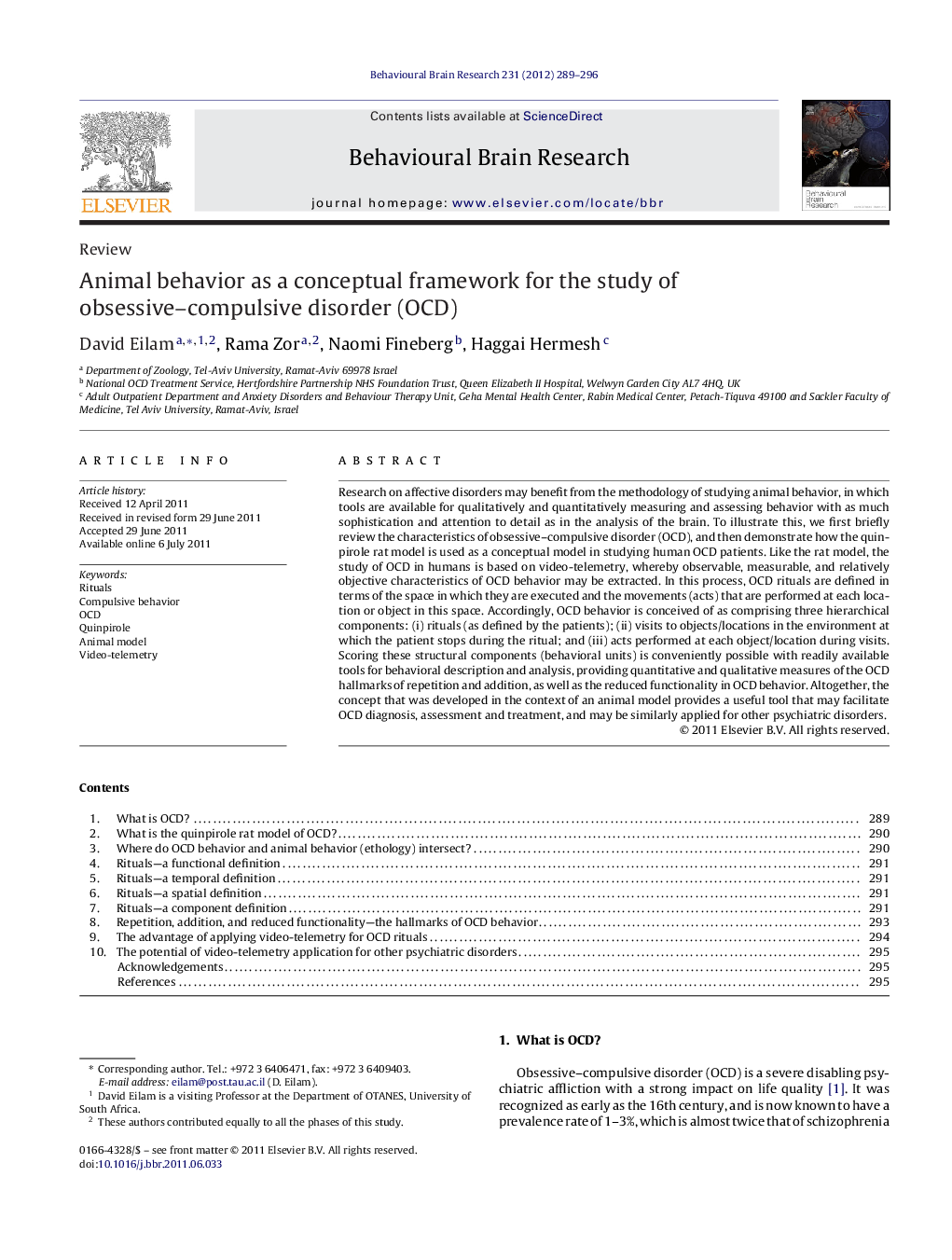| کد مقاله | کد نشریه | سال انتشار | مقاله انگلیسی | نسخه تمام متن |
|---|---|---|---|---|
| 4313072 | 1289984 | 2012 | 8 صفحه PDF | دانلود رایگان |

Research on affective disorders may benefit from the methodology of studying animal behavior, in which tools are available for qualitatively and quantitatively measuring and assessing behavior with as much sophistication and attention to detail as in the analysis of the brain. To illustrate this, we first briefly review the characteristics of obsessive–compulsive disorder (OCD), and then demonstrate how the quinpirole rat model is used as a conceptual model in studying human OCD patients. Like the rat model, the study of OCD in humans is based on video-telemetry, whereby observable, measurable, and relatively objective characteristics of OCD behavior may be extracted. In this process, OCD rituals are defined in terms of the space in which they are executed and the movements (acts) that are performed at each location or object in this space. Accordingly, OCD behavior is conceived of as comprising three hierarchical components: (i) rituals (as defined by the patients); (ii) visits to objects/locations in the environment at which the patient stops during the ritual; and (iii) acts performed at each object/location during visits. Scoring these structural components (behavioral units) is conveniently possible with readily available tools for behavioral description and analysis, providing quantitative and qualitative measures of the OCD hallmarks of repetition and addition, as well as the reduced functionality in OCD behavior. Altogether, the concept that was developed in the context of an animal model provides a useful tool that may facilitate OCD diagnosis, assessment and treatment, and may be similarly applied for other psychiatric disorders.
► Video-telemetry, was applied for studying 43 motor rituals of human OCD patients.
► We provided a detailed spatio-temporal definition of rituals and their structural components.
► We provide hard data for repetition and addition of acts in OCD motor rituals.
► These may serve to determine severity of compulsions and their exact symptoms.
► Video-telemetry is a tool for uncovering phenotypic markers, which may differentiate OCD from other psychiatric disorders.
Journal: Behavioural Brain Research - Volume 231, Issue 2, 1 June 2012, Pages 289–296